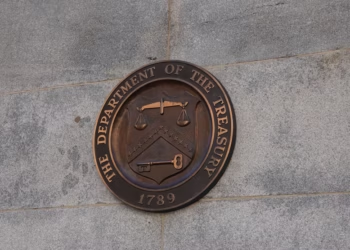This blockchain platform offers decentralization, security and scalability in tandem
Partisia Blockchain is an L1 with novel zero-knowledge oracle and sharding solutions, sorting out problems plaguing the broader blockchain industry.
Diverse blockchains are plentiful nowadays, and solving the biggest challenges in the blockchain space is more critical than ever. Transitioning blockchains from their isolated nature toward a more interoperable framework presents significant hurdles, necessitating solutions that concurrently address privacy, security and scalability.
Existing blockchains are either fully transparent or fully anonymous, and neither solves the trust problem. The standard transaction output of layer-1 protocols is limited, with the original blockchain processing only seven transactions per second . Moreover, L1s are not designed to be interoperable by themselves.
Developed by a group of well-known scientists with 35 years of research and 15 years of practical implementation experience, Partisia Blockchain is designed to tackle these issues and become a sustainable ecosystem that enhances building opportunities for developers.
Solving the current challenges in blockchain L1s
Partisia Blockchain is an interoperable messaging protocol that aims to solve the 3 biggest challenges in the blockchain space via the unique features it offers. The protocol employs a scalable sharding architecture, customizable multiparty computation (MPC) and tokenomics that allow for paying gas with other tokens than its native token.
Created by the project’s co-founder Ivan Damgård, who is also the inventor of Merkle-Damgard hash construction used in Bitcoin ( BTC ), customizable MPC offers an auditable privacy layer on top of which private data are computed. By allowing the processing of data without knowledge, it ensures the reliability and authenticity of the computation while preserving privacy. The zero-knowledge (ZK) variant technology enables a trust system that helps tokens, both transparent and anonymous, to thrive.
Its sharding architecture provides an opportunity for multiple blockchains to work independently but simultaneously. The messaging layer facilitates state synchronization by carrying transaction information from one blockchain to another. Whenever there is a need for additional output, a new block may easily be created, thus providing true horizontal scalability.
Various blockchains within the Partisia ecosystem are rendered interoperable owing to its gas mechanism. Liquid tokens of different blockchains can be used to pay for gas on Partisia, enabling wider interaction opportunities.
The integration of liquid tokens allows for the development of a unique staking model. MPC, Partisia Blockchain’s token that has recently been listed on multiple exchanges, functions as a governance and collateralization token within the blockchain. Users that are eager to participate in blockchain governance stake MPC and earn staking rewards in return. Stakers may opt to be rewarded both in the blockchain’s native currency and other liquid tokens that are used for gas payment, such as ETH, MATIC, BNB and prominent stablecoins, including USDC and USDT.
Furthermore, MPC is also used to provide protection for the ecosystem. On Partisia Blockchain, users may facilitate various transactions ranging from consensus and ZK computation to token bridging by using MPC as collateral.
Enabling developers to create unique applications in the Web3 space
Through these value propositions, Partisia Blockchain empowers the creation of unique applications in the Web3 space that are currently not possible in other chains. The situation is evident in Partisia Blockchain’s current ecosystem map.
Partisia Blockchain’s ecosystem map. Source: Partisia Blockchain
From unique Web3 applications like privatized DAOs, secret auctions enabling DEXs to be front-run resistant, auditable e-cash, privatized verifiable supply chains, RWA with privacy features and improved DID to traditional institutional applications like privatized healthcare data analysis, whistleblower solutions and unbiased RNG, Partisia Blockchain has the potential to allow developers to create solutions that could transform or disrupt existing market places.
Partisia Blockchain announced a 100 million MPC token ecosystem grant program with the goal of fostering innovation. Source: Partisia Blockchain
With a 100 million MPC token ecosystem grant program, developers are further incentivized to push the boundaries of what current blockchain solutions provide. For detailed information on the requirements and application procedure, read more here .
Disclaimer. Cointelegraph does not endorse any content or product on this page. While we aim at providing you with all important information that we could obtain in this sponsored article, readers should do their own research before taking any actions related to the company and carry full responsibility for their decisions, nor can this article be considered as investment advice.
Disclaimer: The content of this article solely reflects the author's opinion and does not represent the platform in any capacity. This article is not intended to serve as a reference for making investment decisions.
You may also like
Ethereum's imminent fall: Trader predicts historic 91% devaluation against Bitcoin
Ripple Revolutionizes Global Payments with RLUSD Stablecoin Integration
Cardano Innovates with Veridian: Quantum-Resistant and Globally Interoperable Digital Identity Platform
U.S. Treasury Sanctions Crypto Wallets Tied to Houthi Terrorist Financing
The U.S. Treasury Department has intensified its crackdown on financial networks linked to terrorist organizations, sanctioning multiple cryptocurrency addresses associated with the Yemen-based Houthi movement.

